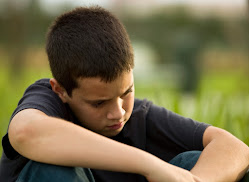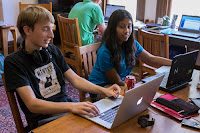Abnormal Grieving in Children on the Autism Spectrum

“I have a 10-year old son Michael who has high functioning autism. His father passed away a couple months ago. Michael coped with this remarkably well initially. He didn’t seem terribly upset, and didn’t even cry at the memorial service. But about 3 weeks ago, we went together as a family to put some additional flowers on his father’s grave. Later that day, I found him sobbing intensely in the closet in his bedroom. Currently, he is having a lot of behavior problems at school and is risking suspension. The school is considering transferring him to a special education class for students with various disabilities. Today, he refused to go to school. He hardly leaves the house. He prefers to stay in his room playing video games, and will not even eat meals with us. I told him that I would like for us to see a counselor for therapy, but he says he will not go! So my question is how do I get Michael to cope with the loss of his father?” Children with High-Functioning Autism and As
